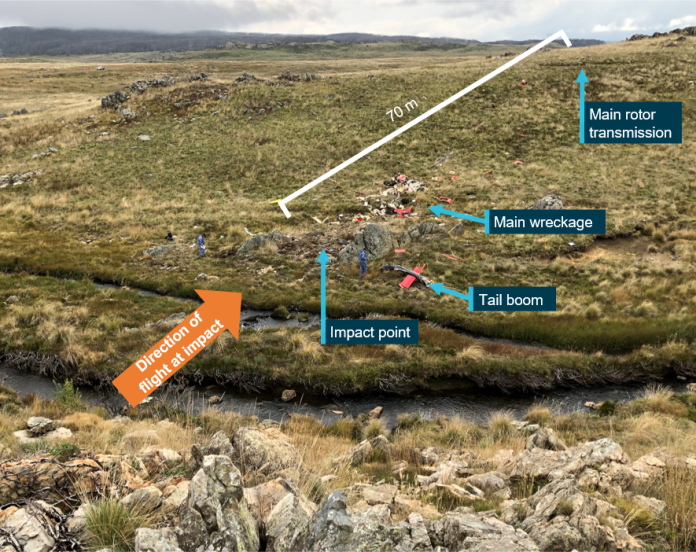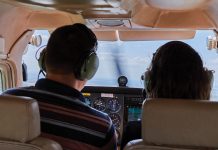A privately operated helicopter that crashed in Kosciuszko National Park, NSW, killing the two people on board had landed earlier in the day as weather closed in, but taken off again, the Australian Transport Safety Bureau (ATSB) says.
The ATSB late last week issued a preliminary report into the crash, which happened on 3 April this year. The Bell 206-L4 LongRanger had been one of 7 helicopters taking part in a flying tour, following a common itinerary but operating independently. It had taken off from Majura, near Canberra about 10:20 that morning.
Pilots and passengers of the other helicopters in the tour encountered deteriorating cloud and visibility conditions and landed on a property near Wee Jasper, at the northern end of the Brindabella mountains. When the LongRanger did not arrive, they notified authorities who began a search for the helicopter.
At 11:29 am, the LongRanger landed next to Long Plain Road in the Brindabella mountains. The driver of a vehicle travelling on that lonely dirt track stopped and approached the helicopter and ended up taking the helicopter the pilot to a location that allowed phone contact with other members of the tour. The pilot advised other members of the tour of the safe landing and that the helicopter’s intended destination had been Tumut, not Wagga Wagga as recommended by the tour organiser. The driver and pilot then returned to the aircraft.
Recorded flight tracking data showed that at 2:53 pm, the helicopter departed Long Plain Road with the pilot and passenger on board. Police officers sent to locate the helicopter arrived at the landing site just after it became airborne. The driver and police officers saw the aircraft depart to the south at low level, in overcast conditions with low cloud and light rain.
Tracking data showed the helicopter progressed below 500 ft above ground level, following geographical features along lower lying terrain. The helicopter turned north-west, towards Tumut, then turned south flying to Anglers Reach on Lake Eucumbene, before turning back towards Tumut. The helicopter climbed to 7,000 ft above sea level – about 2,500 ft above ground level – and continued for about six minutes, before descending to 6,800 ft, and almost immediately climbing again. It climbed to 7,400 ft, then began a steep turn, that saw its ground speed increased to 134 kt, and its descent rate exceed 3,800 ft per minute. Soon after, it struck the ground near the abandoned village of Kiandra.
‘On-site examination indicated that the engine was providing power at impact,’ The ATSB report said. ‘There was no evidence of an in-flight break-up or a pre-existing defect with the drive train or flight controls.’
ATSB director transport safety Stuart Macleod said the final investigation report would further review and analyse pilot and maintenance records, recovered wreckage components, the flight tracking data, witness information and meteorological data.





